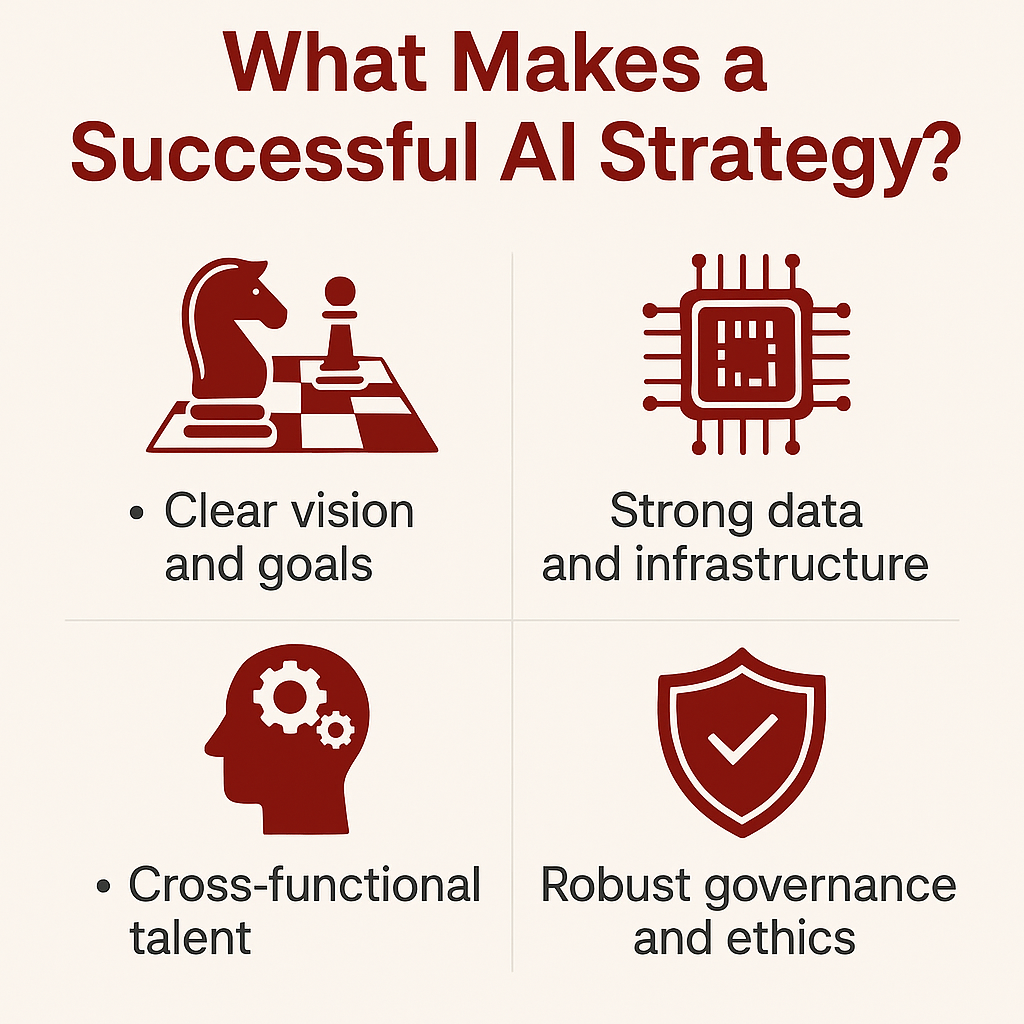


This blog explores how organizations can create an AI strategy that adapts dynamically with changing business needs, industry disruption, and emerging technologies. It delves into strategic planning frameworks, adaptive governance models, and decision-making processes that help AI initiatives remain aligned with growth goals.
AI isn’t a destination—it’s a journey. And like all great journeys, the map often changes. What if your AI strategy could flex, bend, and even reroute itself based on your company’s evolving goals and the industry’s sudden shifts? That’s where an adaptive AI blueprint comes in.
This blog dives into the art (and a bit of science) behind building a flexible AI strategy that won’t go obsolete with your next quarterly pivot. We’ll explore how smart businesses are designing AI frameworks that aren’t stuck in one-time planning spreadsheets, but are as dynamic as the teams driving them. From understanding what "adaptive" actually means, to rolling out iterative governance models and feedback loops, we’ll cover it all.
We'll also take a look at real-world examples where nimble strategies outpaced static ones, and why "set-it-and-forget-it" thinking is a surefire way to waste your AI investments.
“The best strategies are written in pencil, not stone.” — Michael McGrath, Strategy Consultant
By the end of this blog, you’ll know how to think like a strategist and build like an engineer—creating a system that learns, adapts, and scales with you. Because let’s face it, if your AI plan can’t survive a market curveball, it probably wasn’t all that smart to begin with.

An adaptive AI strategy isn’t about having all the answers—it's about building a system that can keep asking the right questions as things change. Here’s how you can start doing just that:
Here’s what recent studies say:
Now, let’s say you’ve got the AI strategy, the tech stack, and the will to move fast. But you need talent. Not just random freelancers—but the right specialists, fast.
That’s where Proso comes in.
Proso is an AI-driven marketplace connecting businesses with top-tier data scientists, ML engineers, prompt architects, and strategy consultants. It’s not your typical gig platform. Proso matches you with vetted professionals based on your specific project stage, domain, and even risk appetite.
For example, imagine you’re deploying an AI model for demand forecasting. You’ve built the first version, but performance is dropping. Proso helps you find a model optimization expert who’s worked in your sector before and can help today—not three weeks from now.
A mid-sized logistics firm recently shared how they cut development time by 40% by onboarding a full-stack AI team from Proso in just two days. As they put it:
“It’s like having a CTO in your back pocket.”
From fractional consultants to full-stack teams, Proso helps you scale the human side of your adaptive AI strategy.
Click here to explore Proso’s AI marketplace →
If your AI strategy is evolving, your team should evolve with it. Proso makes that happen without the hiring bottleneck.
As we look ahead, adaptive AI strategy will no longer be optional—it’ll be the baseline. Businesses that treat AI like a one-time project will be outpaced by those who treat it like a living system. The market’s too fast. The tech’s too dynamic. And the customers? They change their minds every five minutes.
What you can do today is start with flexibility. Build with feedback in mind. Make room for modularity and governance early on. Think less like a legacy IT department and more like a startup founder—fast, experimental, and always curious.
In the near future, adaptive strategies will also mean:
So what’s your next step?
We’ll be updating this blog regularly with the latest practices, tools, and real-world stories. Bookmark it. Share it. And remember: strategy isn’t a plan. It’s a process.
And if you’re building one that can’t change... maybe it’s time for a new blueprint.
Stay agile. Stay curious. Build smarter.